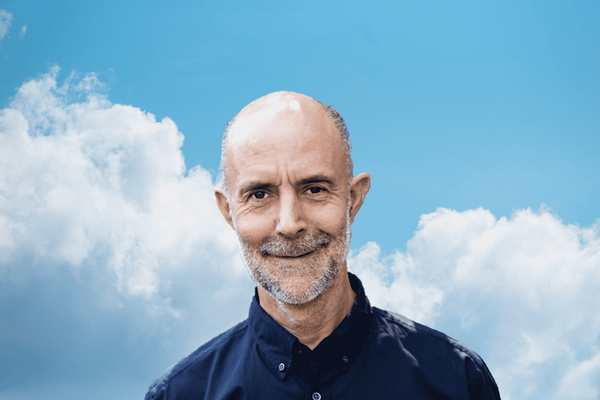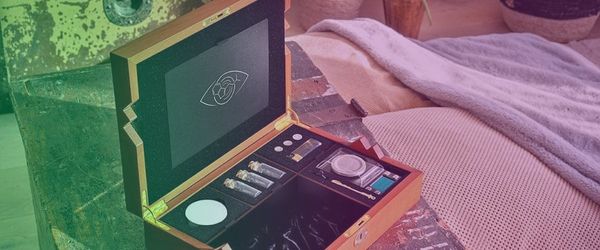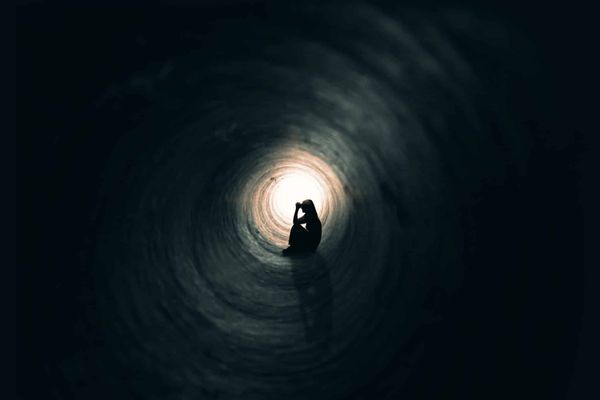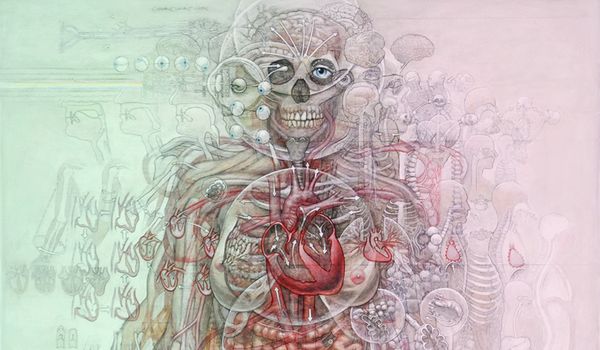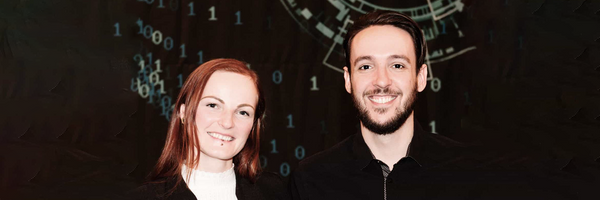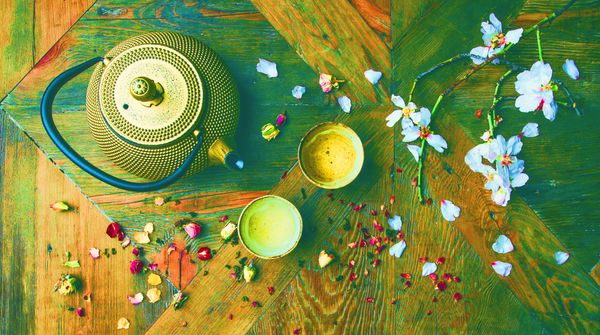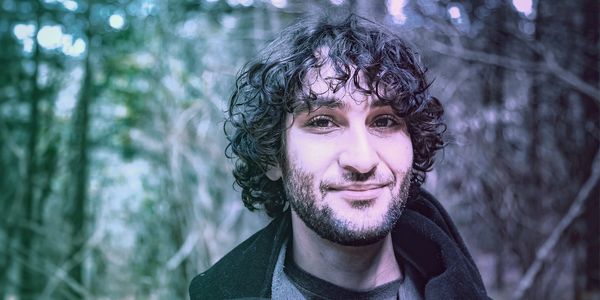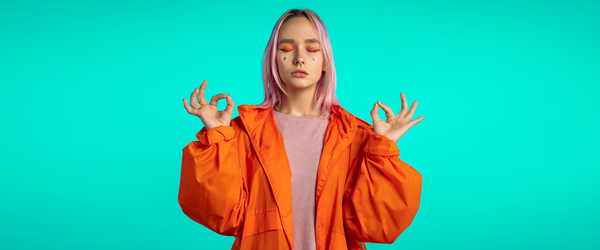Martijn Schirp • • 8 min read
The One Taste of the Universe, or How To Experience Synesthesia
Consciousness & Meditation Psychedelics & Drugs Self Improvement

I tapped my hands on the table like I normally would do. But this time I noticed something different, something quite remarkable. Not only sounds but also colors invaded my awareness. Yes, there was no way to deny it, the tap on the table gave off a red color. Amazed by this discovery I started exploring other surfaces, my nails on my jeans gave off a distinct green hue and I could make blue come alive by hitting a metal pen. But it didn’t stop here. When I drew my attention inward, I noticed not just the connection between sounds and colors, but also between colors and tastes, sounds and feelings, thoughts and sensations. It was if my whole world was mixed in a blender, making a smoothie of my own existence.
I knew synesthesia existed, but I had never experienced it myself, at least not so vividly, so undeniable real. And so the implications of this ability evaded me. Until now. It took me some research to learn that about 1 in 25 people experience it naturally, although there are degrees in vividness. And everyone is able to experience it by temporarily changing their brain chemistry or by training, as did I, by ingesting a small dose of LSD.
Synesthesia is the simultaneous perception of two or more stimuli as one phenomenon, it is the effect of increased connectivity between areas of the brain that are normally more separated. and it is the basis of all our experience. It’s when one sense modality gives rise to another and it is the reason why we perceive color, sound, taste and all other qualities of experience as separate, but experience, undeniable, a unity of the senses.
For example, when I look at my cat trying to extort some food by making cute sounds, I don’t see her black shiny fur and then a separate cute sound. No, my cat is making that sound, and I clearly perceive her as one entity. The sound and color are experienced as one, and only when I investigate deeper I will notice the two different sense modalities that overlap each other.
Perception
“Perception is the concerted activity of all the body’s senses as they function and flourish together” writes David Abram in his amazing and philosophically heavy book, The Spell of the Sensuous: Perception and Language in a More-Than-Human World. While normally we would only attribute this overlapping of the senses to people who deviate from the norm, the rare ones who see the different days of the week in different colors, can taste sounds and see music, we easily miss the fact that all our perception is inherently synesthetic. These people just inhabit the different shades of gray area between our more ‘normal’ black and white existence.
I would like to point out, this has not always been the case. When indigenous people talk about the magic of words or the language of the animals it’s easy to put them off as a pre-rational culture that can’t think critically of their place in the world. But the fact is, their perception, their actual way of being is different than ours. They still feel the interconnectedness of the different senses that are in constant conversation with the world around them. This also explains the fact that different cultures have different types of synesthesia, for instance, westerners report colored-smell synesthesia, because it this is a very uncommon phenomenon, but they don’t report smell-taste synesthesia. Conversely, the Desana in the Amazon area experience ‘color energies’, but they don’t report this colored-smell synesthesia since it is a very common experience. Upon hearing a certain tone from a clay panpipe a member of the Desana explains “The odor of the tune is said to be male, the color is red, and the temperature is hot; the tune evokes youthful happiness and the taste of a fleshy fruit of a certain tree. The vibrations carry an erotic message to a particular girl”
I argued here that we lost that ability and that it is a symptom of an all too human world, a world where the Platonic/Christian/Descartian/Apollonian objective way of relating to the world dominates the world of the senses, the world of the passions or the Dionysian. Symbols, not the senses, are used mainly as self-reference.
Another way to describe this divide is our two-fold relationship with language. Linguist Ferdinand de Saussure was the first one to distinguish between la langue, the organic, ever-changing system of terminological, syntactic and semantic rules and la parole, the concrete act of speech, language as a felt phenomenon. The latter is what happens to your body when in conversation, when you use hand gestures, different styles of intonation or by just simply sticking out your tongue. It is what happens when you get in a ‘heated’ argument or get a sense of a certain quality when listening or speaking to words with old roots, like earth or sea. It is when your body actually feels, is resonating with, when someone raises their voice in anger, or soothes you with kind speech. It’s what we mean when we talk about cool or warm colors. But because of the objectification of the world, we take more interest in what language means than what it feels like, preferring functionality over sense, thus staying completely oblivious to the fact that when I try to defend an argument with pure ratio, or logos, my body responds by holding tension. The argument is embodied.
The Case For Qualia
Because most of us live in a perpetually reinforced state of thinking objective felt thoughts we have become somewhat alienated from our senses. We tend to forget that there is no such thing as objective knowledge, since all knowledge must be knowledge as experienced. But when we go higher and higher on the ladder of abstraction (this goes for both the concept of God, as well as scientism), it loses more and more contact with the experienced world. Ideas are then just boxes that are left empty since they aren’t filled with what our senses can converse with.
It is easy to make your whole subjective experience conform to objective knowledge. For example, it is easy to deny yourself that love comes from the heart when seeing your family or friends because evolutionary psychology states that it has aided in our survival over generations or that it’s just some hormones, neurotransmitters and synaptical connections in our brain and nervous system that is connected to our immune system that aids in our sexual preferences. But when you actually experience love, when the empty symbols gets life poured in, your heart becomes a signal as no other.
Peter Sloterdijk writes in his book The Critique of Cynical Reason that this way of relating to the world is rooted in fear, that the drive for objective knowledge is only a tool that is used in order to preserve the self, the self that doesn’t trust the senses anymore and is then bound to map, control and always be on the look-out for the world that is not-me. This fear is our fuel for systematically constructing an identity from outside sources, like science, religion and media, thus depriving us from creating one ourselves. We are turned into spies that try to predict every move of our enemies, everything we can’t control and thus a potential threat.
It’s not that we need to get rid off measures, quantities and rationalism, it’s that we need balance and complement them with what information the senses bring us. To illustrate this, let me introduce you to a simple thought experiment. So you can literally make sense of it. Meet Mary.
Mary is a brilliant scientist who is, for whatever reason, forced to investigate the world from a black and white room via a black and white television monitor. She specializes in the neurophysiology of vision and acquires, let us suppose, all the physical information there is to obtain about what goes on when we see ripe tomatoes, or the sky, and use terms like ‘red’, ‘blue’, and so on. She discovers, for example, just which wavelength combinations from the sky stimulate the retina, and exactly how this produces via the central nervous system the contraction of the vocal cords and expulsion of air from the lungs that results in the uttering of the sentence ‘The sky is blue’. […] What will happen when Mary is released from her black and white room or is given a color television monitor? Will she learn anything or not?
Premise 1: Any and every piece of physical knowledge in regards to human color vision has been obtained (by the test subject, Mary) prior to her release from the black-and-white room. She has all the physical knowledge on the subject.
Premise 2: Upon leaving the room and witnessing color first-hand, she obtains new knowledge.
Conclusion: There was some knowledge about human color vision she did not have prior to her release. Therefore, not all knowledge is physical knowledge.
The Body As a Sense Organ
Philosopher Maurice Merleau-Ponthy posited that idea of the whole body as a subjective sense organ. If you combine this with the fact that all our senses have the skin as a common ancestor, it comes as no surprise that layers upon layer of information pathways are extremely interconnected. The increase of this information makes us able to predict the future better and making better sense of our surroundings, thus giving us a better evolutionary advantage. It can be likened to pinpointing a source of sound, for example (extremely simplified); one cell can detect vibration, two cells can detect a wider range of vibration, an ear can detect a whole wide range of vibration, and two ears can actually pin point the location of the sound by differentiating the time it reaches both independent ears.
The implication of this is that we can learn ever deeper layers of perception, ones we didn’t notice before. We could actually learn a deepening world of synesthesia, making a symphony of our senses. It’s like discovering a melody in music, once we have noticed it, it becomes a ‘fixed gestalt‘, a unity instead of single, independent notes. We can learn to wear new glasses.
How To Become Aware of Synesthesia
Well, it takes a lot of concentration and since there is no example to copy, you have to discover it yourself. The first step is to become aware of the subtle differences of phenomenon by looking for common sensual correspondences in different rhythms. Once you ‘get’ the feeling of different weight of vowels or color of musical tones, some subtle difference, you can explore this deeper and deeper. It’s like suddenly hearing an annoying constant tone that you can’t un-hear once you’ve noticed it. You’re not exactly discovering it, although the basic neural pathways are there, you are more creating it. Paying attention to something increases neural strength, and makes it easier to notice something in the future.
The second step is to pay strong attention to your moment to moment sensational experience. It works if you have a basic understanding of some mindfulness techniques, but this is by no means necessary. When eating, it is vital to close off any external stimuli, like music, television or internet. Also close your eyes. Then try to notice the whole spectrum of the taste and structure of the food you are eating, and at the same time, focus on your smell senses. These overlapping is taste/smell synesthesia, and it is quite common in most cultures. Another practice is to listen to music, preferably through headphones, and then keep looking, even though you close your eyes. These ‘visuals’ are actually a form of sound/visual synesthesia and are also very common, especially in altered states of consciousness (drugs, fever, fasting and meditation). You can also look for colors when you think about numbers, or look for tastes when listening to music. And another very important one is between bodily tension/relaxation and different types of emotions/thoughts. If you practice yoga for instance, the release of chronic tension is closely correlated with the release of long-held emotional ‘fixed’ states.
It’s quite normal for children to experience synesthesia, but an increase in cognitive training, like math and language, asks much of their concentration and energy, leaving little room for the more creative capabilities of our mind. While only being tested on things that can be measured, children often forget they had the ability at all. But it’s never too late to regain this potential, to get a deeper sense of music and art. All you have to do is to explore the world of the inner, paying attention to how different senses influence each other.

